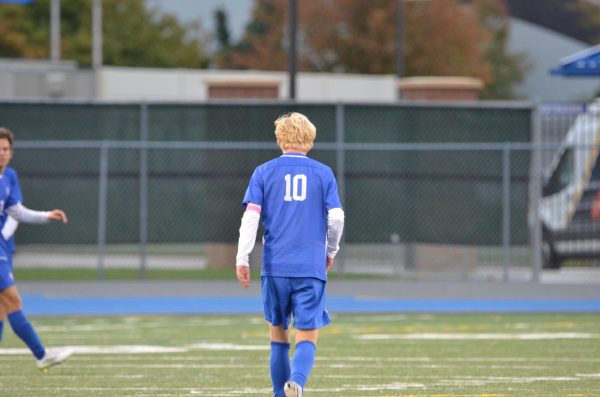Transferring athletes deal with regulations
by Hillary Donovan, Sports Editor
In the state of Minnesota, there are about 85,000 students that will participate in school sports. Every year about 5,000 of those students will transfer between schools and play for other teams.
According to Minnesota State High School League (MSHSL) rules, if an athlete transfers schools, without moving they must sit-out an entire year of varsity sports, or play at a non-varsity level. Although these rules exist, it does not always stop students from changing schools and playing for different schools.
Rubysummer Lord-Moreland, junior, came to HHS this year from Minneapolis Southwest High School.
“I didn’t really move for sports. I moved more for academics, but it kind of all fell into place,” said Lord-Moreland.
Lord-Moreland plays for the girls varsity volleyball team at HHS.
“Hopkins had great fans and everyone is really enthusiastic about every sport versus my old school. Volleyball wasn’t that great of a sport at Minneapolis Southwest,” Lord-Moreland said.
The rules about transferring athletes were put into place because MSHSL wanted to restrict and prevent athletic transfers and ensure competitive equality amongst schools.
Dan Johnson, Athletic Director, worked on the committee to create these rules.
“There used to be rules where a student would get one free move from the time you started ninth grade. Before that it was you could change schools as long as you did it in the summertime,” said Johnson. “There were a bunch of quirky rules where you could be eligible as a freshman at one school, and the next summer you went to a different school but didn’t move and you could be eligible there too, and those rules weren’t working very well.”
There are exceptions to the rules. If a student changes schools because of an adoption, abandonment, death of a parent, or moving from a private school to a public school because of financial reasons, they are allowed to play on a varsity team. Other than those few exceptions, an athlete that changes schools is not allowed to play at the varsity level.
“I don’t think its ever a good idea to switch schools just for athletic purposes. Some families are just really into a particular school because of an IB program or an immersion program or something academic. No one will ever say, ‘oh we’re just moving to be on the soccer at this school, or the baseball team on that school, but the reality is that athletic reasons is the only reason they left,” Johnson said.
Keyshawn Morgan, junior, also came to HHS this year. Unlike Lord-Moreland, Morgan didn’t move houses, preventing him from playing varsity football.
“The main influence of the switch was my dad. I guess I transferred because it just seemed right. It was a really hard decision to switch schools considering I used to go to Minnetonka,” Morgan said.
Once a student switches schools, they must sit out of varsity play for an entire calendar year of enrollment. At HHS there is an average between 10-30 transfers each year, compared to other schools in the Lake Conference, some having 30-50 transfers each year.
“We are light this year on transfers. We have had around ten this years at Hopkins. I think the rules have curved some of the ridiculous movement, but if people really want to make a move happen, it’s a big commitment from their entire family, and sometimes they make it. If people have the ware and the finances to do what it takes to beat the rules, than they can do it, and they can beat the system,” Johnson said.

